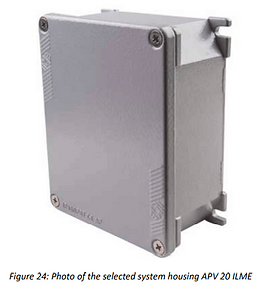WORLD VISION'S CHLORINE-MONITOR CHALLENGE

Overview
This challenge was the second open-innovation project for World Vision in which SeaFreight Labs served as Project Advisor. The challenge launched to the public on 4 November 2020 and closed to new submissions on 4 February 2021. It was presented as an RTP (Reduction-to-Practice) challenge with prize money of US$20,000. It attracted 286 registered solvers from 64 different countries. They submitted 42 proposals. A group of 10 judges from both within and outside of World Vision participated in various stages of evaluation to determine the winning solution. Click HERE to read the press release published on 31 January 2022.

Challenge Definition
The introduction of chlorination as a means to disinfect and safeguard public drinking water represents one of the most impactful public health advances in recorded history. Despite the well documented public health benefits, however, the use of chlorination in rural water supply systems in sub-Saharan Africa remains low. One factor limiting its use is the ability to efficiently monitor free residual chlorine levels at multiple points with the water distribution system. While proprietary technologies have been developed to automate the measurement process, they remain expensive and therefore impractical for smaller scale, rural systems in resource-constrained settings. The Seeker for this Challenge, World Vision, supported by SeaFreight Labs is seeking low-cost, easily maintainable technologies and/or devices to monitor free residual chlorine in piped water distribution systems located in rural areas of sub-Saharan Africa.
This is a Reduction-to-Practice Challenge with a guaranteed award for at least one submitted solution. The detailed problem statement is available HERE.
Winning Solver
The winning solver is Emil Valchinov, a citizen of Bulgaria. He has a Ph.D. in biomedical engineering and is also an electrical engineer. He is currently a freelancer working with many different companies and universities. He participated in the challenge because he had broad expertise in the design and development of similar systems and loved the idea of contributing to a humanitarian organization.
He spent 4-5 weeks preparing his proposal and another 4-5 weeks building and testing his prototype.
Winning Solution
The winning solution is at the "working prototype" stage (see photos below). It is a fully automated system, controlled by a custom-designed Arduino-compatible PCB for free residual chlorine monitoring using a certified, low-cost commercially available, amperometric FCL sensor using a three-electrode potentiostatic method in combination with a dedicated flow cell, real-time data transmission through LoRaWAN, semi-flexible solar panel, and local storage on a microSD card. The flow cell provides an adjustable/controlled constant flow rate of 0.25 L/min to the sensor with a drain to “waste”, thus making the system independent of pipe network flow or pressure. The water “loss” is 0.5L per measurement session with a duration of 130 seconds and can be collected in a water canister with a tap and used even as drinking water since the measurement does not affect its quality. So if the system is programmed to perform 4 measurements daily, about 2 Litres will be collected in the water canister per 24 hours.
The selected digital free residual chlorine sensor (CS5530D) was preferred for its reliable operation and infrequent, easy to perform maintenance (no buffer solutions, no membrane, etc.) without the need for service contracts thus allowing long unattended operation at low operating cost. The fully automated system is powered by a rechargeable Li-Ion Battery (NCR18650, 3.7V, 2.9Ah), charged by a semi-flexible solar panel (5V, 1W) through a dedicated solar panel manager (DFR0559) module employing high-end MPPT (Maximum Power Point Tracking) technology. The last ensures that the photovoltaic cells always output the maximum power when the light intensity changes, to make full use of solar energy. However, due to fact that the system mainly stays in Sleep (low-power) Mode (0.4mA) and wakes up only for a short interval of time (130sec) to perform the measurements, it could run only on battery for about 6 months before recharging is needed, thus allowing also its implementation without solar panel.
The system samples the water every 5 seconds (user-defined) and an average value of 21 measurements (105sec) is sent as a message over LoRaWAN network with a spread factor SF11, and locally stored on an SD card with a timestamp. The selected SF provides increased time on-air, with reduced data rate, but improved communication range. The complete system (Main PCB, Flow Cell, and Sensor) is housed in a waterproof IP67 aluminum enclosure, where the solar panel is externally attached to the front panel. All the components (hardware and software) are readily available off the shelf and are of economic cost. Additionally, the system allows for simple in-field calibration (ZERO and SLOPE) without the use of a Laptop, where only a water sample with a known free residual chlorine content is required.
The complete description of the system is available HERE.





